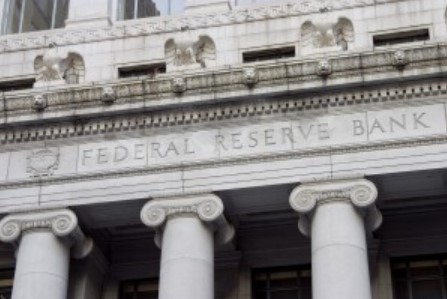Fed Cuts Rates by 25 Basis Points
Originally Published by: Builder Online — November 7, 2024
SBCA appreciates your input; please email us if you have any comments or corrections to this article.
The Federal Reserve elected to cut rates for the second consecutive meeting, continuing on its path to balance maximum employment and a 2% long-run inflation rate.

Aaron Kohr - aaron@kohr.org, Adobe Stock
At its November meeting, the Federal Reserve Open Market Committee (FOMC) unanimously voted to cut the federal funds rate by 25 basis points to a target range of 4.5% to 4.75%. The Fed announced its first rate cut in four years in September when it slashed the federal funds rate by 50 basis points.
Zonda chief economist Ali Wolf says the 25 basis point cut was in line with expectations. The only doubts surrounding the likelihood of a cut stemmed from potential uncertainty about the presidential election. However, with the election results confirmed ahead of the Fed’s meeting, it was able to “stay on course,” Wolf says.
According to the FOMC, labor market conditions “have generally eased” since earlier in the year and the unemployment rate—while still low—has moved upwards. Additionally, inflation has made progress toward the FOMC’s target of 2%.
“The committee judges that the risks to achieving its employment and inflation goals are roughly in balance,” the FOMC said in a statement released following the decision. “The economic outlook is uncertain, and the committee is attentive to the risks to both sides of the dual mandate.”
In the labor market, the unemployment rate ticked up 30 basis points to 4.1% in October, while the rate of hiring fell 20 basis points to 3.5%. Labor Department data indicates employers had a seasonally adjusted 7.4 million job openings in September, down significantly from 9.3 million in the same month a year ago.
Inflation has moved closer to the long-run target of 2% in 2024, with the core personal consumption expenditures price index averaging 2.7% annual growth in September. The Consumer Price Index, another gauge of inflation, averaged 2.4% annual growth in September.
In his analysis of the Fed’s rate cut for NAHB, chief economist Robert Dietz says inflation risks for 2025 “are evolving.”
“The election increases the probability of additional economic growth, a tighter labor market, larger government deficits, and higher tariffs. All of these factors can be inflationary, even if they yield other macroeconomic benefits,” Dietz said.
Wolf says the election results will likely only alter the Fed’s policy decisions moving forward if the path of the economy is impacted as well.
“Right now, investors believe president-elect Trump’s policies will result in more economic growth, higher debt levels, and potentially higher levels of inflation,” Wolf says. “If investors prove to be correct, the Fed may be forced to change course in late 2025 or 2026. Importantly, though, Fed chair Jerome Powell said at the Fed’s press conference that they don’t ‘guess, speculate, or assume based on policy discussions and will remain data-dependent.”
According to Radix chief economist Jay Denton, the Fed’s decision to cut rates will help bolster consumer spending, provide a positive impact for businesses looking to hire and invest, and help stabilize labor markets.
“The decision comes against a backdrop where demand for housing remains solid; in markets where we see fewer supply issues, rents are increasing at mostly a normal pace,” Denton said. “To the extent U.S. businesses continue to add jobs and wages continue to increase, we should expect multifamily rents to also rise an average of 3% annually.”
The September cuts preceded a drop in mortgage interest rates to near 6%. However, mortgage interest rates have increased for the past six weeks, rising to an average level near 6.8%, according to Freddie Mac. Mike Fratantoni, senior vice president and chief economist of the Mortgage Bankers Association (MBA), said the big impact on rates this week was the election, not the FOMC rate cut.
“MBA expects that mortgage rates will remain within a fairly narrow range over the next year, with mortgage rates moving higher on signs of economic strength and more stimulative fiscal or monetary policy, or lower if it's the opposite,” Fratantoni said.
Looking ahead, both Dietz and Wolf expect the Fed to cut rates a further 25 basis points at its final meeting in December.
“After that, given expected changes for fiscal policy and fiscal policy impacts, the Fed is likely to slow its pace of rate cuts, perhaps moving to one 25 basis point cut per quarter in 2025 to the ultimate terminal rate,” Dietz said.
